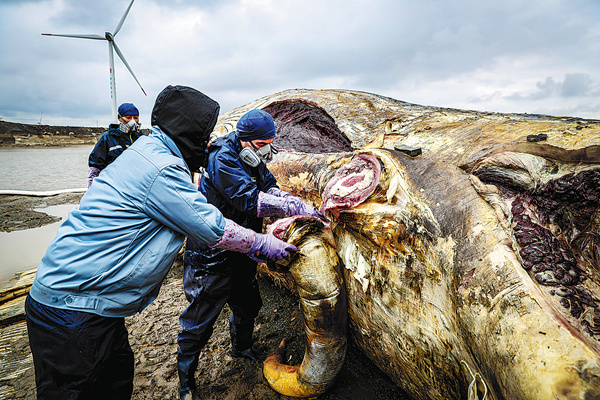

"Decayed tissues filled the carcass with methane gas, meaning it could explode any minute," he adds.
This, coupled with the factor that the 40-metric-ton whale body was in soft sand and would trap the tires of heavy-duty transport vehicles, meant the 12 professionals from the museum had to dissect the carcass in situ.
The first thing the taxidermists did was to set up float lines around the whale's body to avoid its blubber from polluting the waters. They also placed bamboo rafts around the whale to avoid sinking into the sand themselves while working on the body.
The taxidermists then painstakingly cut away the flesh before placing it in bags that had to undergo special treatment before incineration.
For the next 18 days, the coast was their office.
The work continued after the bones were transported to the museum's taxidermy center on Longwu Road. In this second phase, the taxidermists decided to thoroughly remove the flesh from the bones without using chemicals. Instead, they put the skeleton in a big tank filled with water containing special microbes to eat the remaining meat pieces attached to the bones.
When this time-consuming process was completed, they used specially designed steaming equipment to remove the remaining grease from the bones.
According to taxidermist Ruan Minjie, the bones were mostly yellow, with some parts blackened due to thick grease. It was only after several rounds of steaming that the bones turned white.